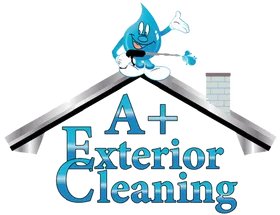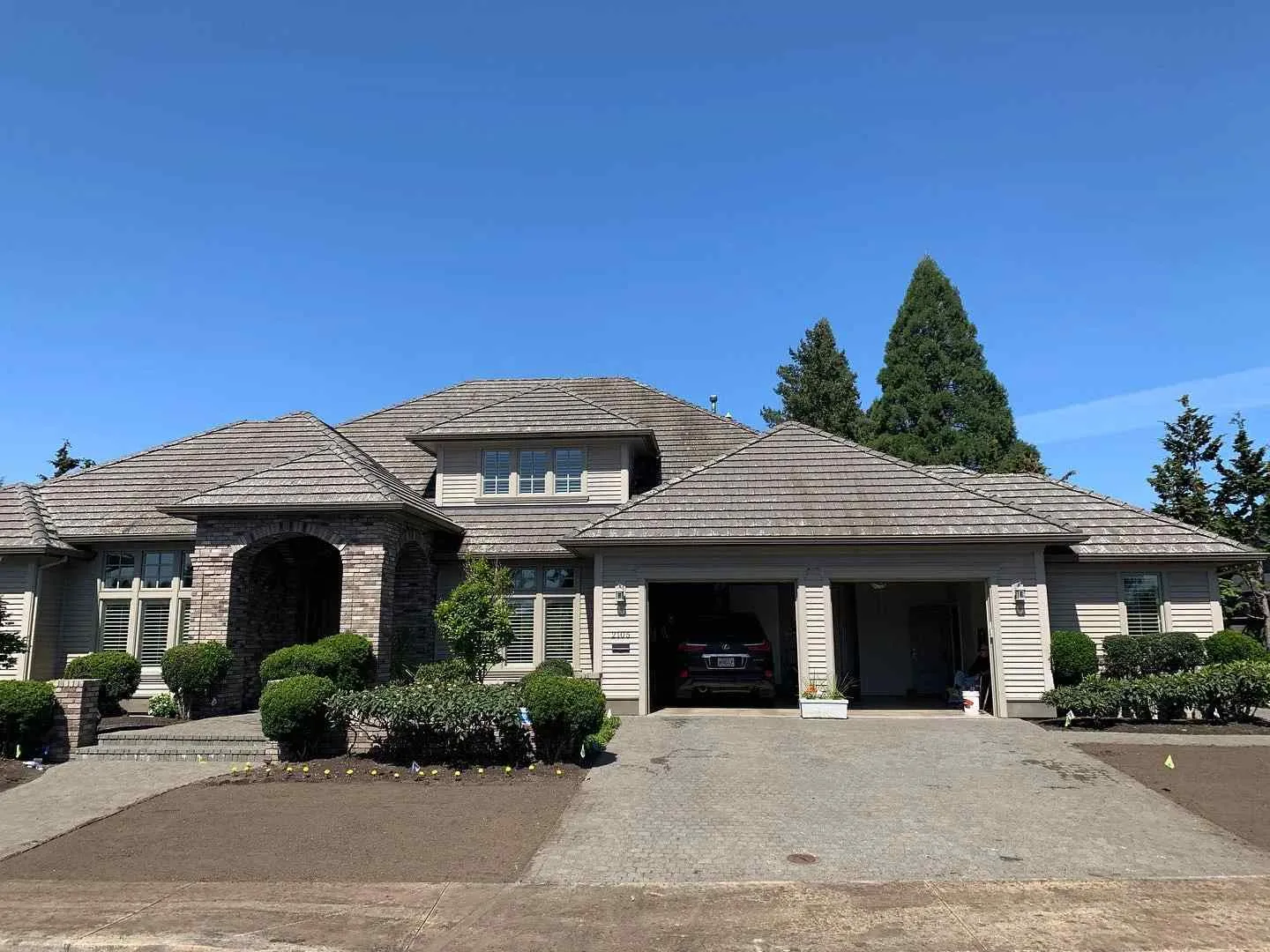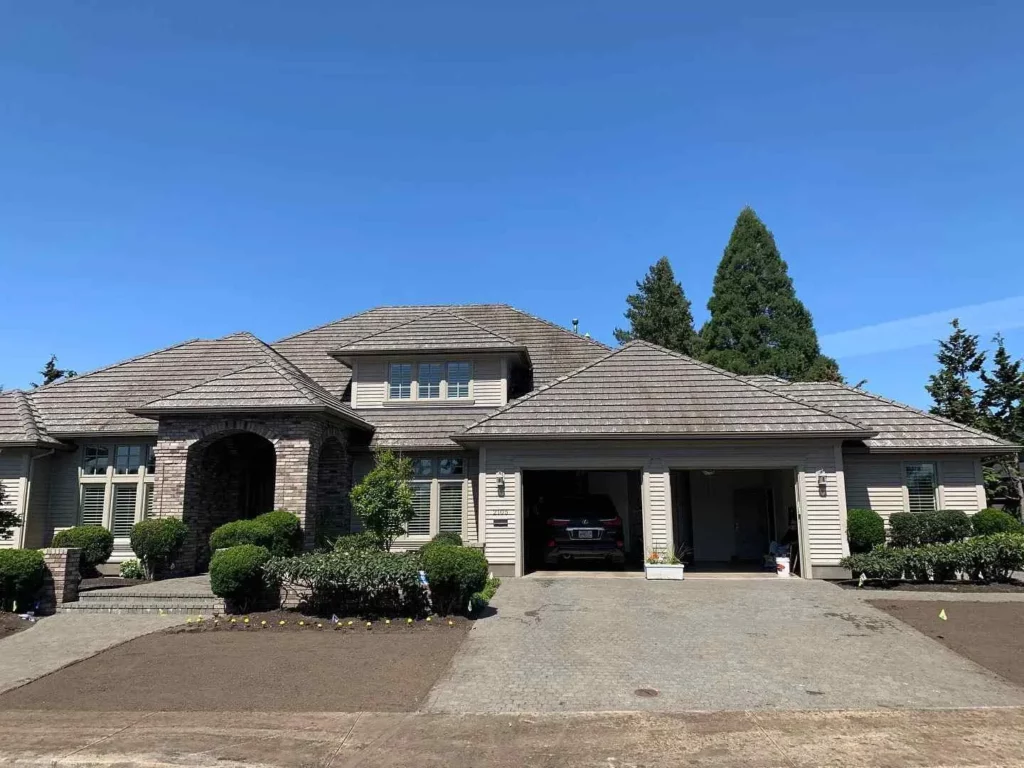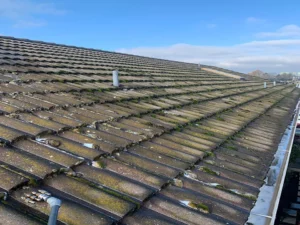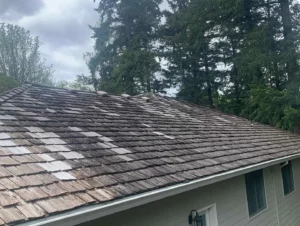Expert Advice: Choosing the Right Moss On Roof Remover
Discovering moss on your roof can be more than just an aesthetic issue; it’s a battle cry for immediate action. Moisture-retaining and capable of causing significant structural damage, moss is an unwelcome guest that can undermine the integrity of your roof over time. But fear not, for with the right moss remover, you can protect your home and preserve its appearance. In this guide, we’ll walk you through the world of moss removers, shedding light on how to choose the perfect product that resonates with your specific roofing needs. Whether you’re confronting a mossy menace for the first time or looking to refine your maintenance strategy, our expert advice will pave the way for selecting moss on roof remover.
Understanding Moss and Its Effects on Roofs
Moss might seem harmless at a glance, but its effects on roofs are far from benign. Thriving in damp, shaded areas, moss easily adheres to roof surfaces, especially those made of porous materials like wood and asphalt shingles. Its growth isn’t merely a cosmetic nuisance; moss retains moisture against the roofing material, fostering an environment ripe for decay and damage. Over time, this moisture can lead to rot in wood and the deterioration of asphalt shingles, compromising the roof’s integrity and its ability to protect the home from the elements. Furthermore, the root-like structures of moss can cause lifting and displacement of shingles, creating potential entry points for water, which might lead to leaks and expensive water damage within the home. Understanding these impacts is crucial for homeowners in mitigating the risks and maintaining the longevity of their roofs.
Types of Moss Removers
When it comes to addressing the problem of moss on your roof, selecting the right moss remover is paramount. Typically, moss removers fall into two main categories: chemical and non-chemical solutions.
- Chemical Moss Removers: These products are specifically formulated to kill moss, algae, and other organic substances that are found on roofs. Many homeowners prefer chemical removers for their ease of use and effectiveness. However, it’s important to choose products that are environmentally friendly and safe for the roofing material. Always follow the manufacturer’s instructions to prevent any unintended damage to your roof or surrounding vegetation.
- Non-Chemical Moss Removers: For those seeking a more eco-friendly approach, non-chemical removers such as zinc or copper strips can be an effective alternative. When installed at the roof’s peak, these metal strips release ions during rainfall that naturally inhibit moss growth. This method requires more upfront installation work but offers a long-term, preventative solution without the use of harsh chemicals.
Choosing the right type of moss remover will depend on several factors, including the extent of the moss growth, the type of roofing material, and personal preferences regarding environmental impact and maintenance efforts.
Safety Considerations When Applying Moss Remover
When applying moss remover, prioritizing safety is crucial to ensure not only the effectiveness of the treatment but also the protection of yourself, your home, and the surrounding environment. First and foremost, always wear protective clothing, including gloves, goggles, and a face mask, to prevent irritation from chemicals or inhaling harmful substances. It’s also critical to choose a calm, dry day for application to prevent runoff, ensuring that the remover stays on the roof long enough to be effective without contaminating nearby plants or water sources.
For chemical moss removers, strictly adhere to the manufacturer’s instructions to avoid damaging your roofing material or nearby vegetation. If using a ladder to access your roof, ensure it is stable and secure to prevent falls. Consider soliciting help from a friend or a professional roofer if you’re uncertain about safely reaching certain areas.
With non-chemical options, like installing zinc or copper strips, proper handling and placement are key. The edges of metal strips can be sharp, so handling them with care and wearing gloves is advisable. Ensuring these strips are securely affixed and positioned correctly requires some technical know-how, so do not hesitate to consult a professional roofer if you are unsure about the installation process.
How to Evaluate Moss Removers
Evaluating moss removers involves a careful consideration of several key factors to ensure you select the right product for your needs while minimizing harm to your roof and the environment. Consider the following criteria when making your selection:
- Effectiveness: Research the effectiveness of various moss removers on the type of moss and roofing material you’re dealing with. Look for product reviews and testimonials from other homeowners with similar problems to gauge the potential success of different solutions.
- Environmental Impact: Consider the environmental footprint of the moss remover. If using chemical options, look for products labeled as eco-friendly or those that break down into non-toxic components. Remember, what goes on your roof ultimately ends up in the soil or waterways around your home.
- Safety: Assess the safety profile of the moss remover. Products should have clear instructions and safety warnings. For chemical treatments, ensure they are safe for use around pets, children, and plants. Evaluate whether you have the necessary equipment to use the product safely.
- Cost: While cost shouldn’t be the only factor, it’s important to compare the cost-effectiveness of different moss removers. Consider both the upfront cost and the potential need for repeated applications or professional assistance if the DIY approach fails.
- Ease of Application: Some solutions may require more labor or specialized knowledge for proper application. Understand the process involved for each type of remover and consider your own capacity to safely and effectively apply the treatment.
- Longevity of Solution: Look beyond immediate removal and consider how long the treatment will protect your roof. Non-chemical solutions like zinc strips may offer a longer-term prevention method compared to chemical treatments that require reapplication.
- Manufacturer Reputation: Choose products from reputable manufacturers that offer customer support and guarantee the effectiveness of their products. A good track record of customer satisfaction can be a strong indicator of a product’s reliability.

Maintenance Tips to Prevent Moss Regrowth
Preventing moss regrowth is essential for maintaining your roof. Regular maintenance not only keeps your roof looking great but also prevents the potential for significant damage. Here are some practical tips to help you keep moss at bay:
- Regular Roof Inspections: Conducting inspections at least twice a year, especially after heavy storms or severe weather, can help you spot and address moss growth early on. Look for signs of damage, such as missing, cracked, or lifting shingles, which can provide a foothold for moss.
- Keep Trees Trimmed: Overhanging branches not only drop debris but also shade your roof, creating a moist, cool environment conducive to moss growth. Trimming back any branches near your roof will increase sunlight exposure and reduce moisture, discouraging moss growth.
- Ensure Proper Roof Ventilation: Adequate ventilation in your attic keeps the roof surface dry and prevents the accumulation of moisture. Check your attic regularly to ensure vents are not blocked and are functioning as intended.
- Clean Gutters and Downspouts: Clogged gutters can cause water to pool on your roof, creating an ideal environment for moss. Regularly cleaning gutters and ensuring downspouts are directing water away from your home will help keep your roof dry.
- Preventive Treatments: After removing moss, consider applying a preventative treatment as recommended by roofing professionals. These may include products that make the roof surface less hospitable to moss or the installation of copper or zinc strips at the ridge of the roof to help prevent growth.
Effectively removing and preventing moss from your roof requires a comprehensive approach. Whether using chemical or non-chemical methods, prioritize safety for yourself, your property, and the environment. Evaluate moss removers based on effectiveness, environmental impact, safety, cost, ease of application, longevity of the solution, and manufacturer reputation to make an informed decision.
While DIY methods can work well, consulting a professional roofer can provide valuable insight tailored to your situation. Professionals offer preventive advice, and regular inspections, and ensure early issue detection for optimal roof maintenance. Regular upkeep and proactive prevention are key to managing moss on your roof—extending its lifespan, preserving aesthetics, and safeguarding against damage.
https://www.google.com/maps?cid=9581861370272832557
